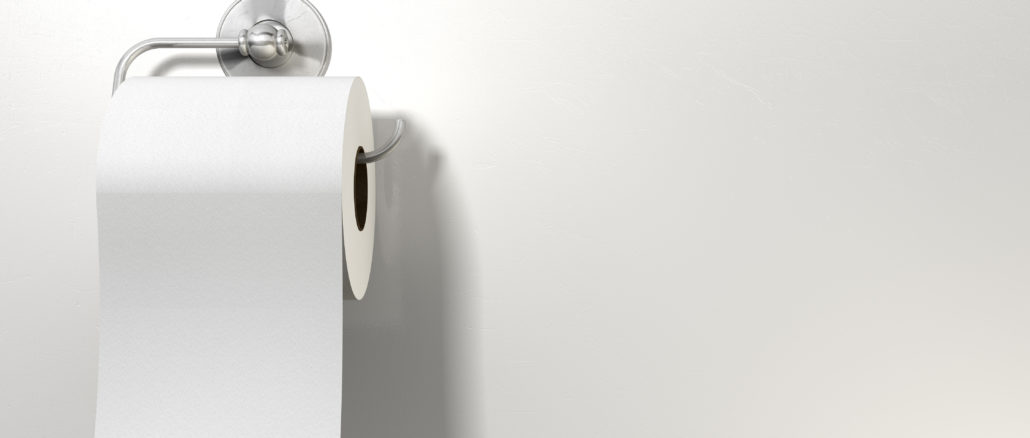
It is amazing how discussions in the workplace can arise out of nowhere. A conversation last week began after I bought a packet of Home Brand chocolate-coated honeycomb squares and sat them in the lolly tray near my desk.
Out of the blue, someone asked with what I considered a tone of “disgust”: “Who on earth bought Home Brand chocolate honeycomb?” I confessed it was me…and so it began.
“Do you also buy Home Brand toilet rolls?,” The synchronised outcry from my female colleagues was an emphatic “NO”.
Is it so hard to believe that 128 years on, the toilet paper discussion still continues? But it did and here’s what was discussed.
PLY PREFERENCE: Some would go no less than two but most preferred three-ply. All said they checked the packaging to see how many sheets per roll. Texture and imprint was more important than pattern. The concern for the married women was the strength of the toilet paper mainly due to their husbands saying it needed to be strong. It didn’t take long to discover the environment friendly paper was not popular as it “gave way” too soon.
VALUE FOR MONEY: This was a priority and we all agreed you needed to be careful to avoid being trapped by the large retail supermarket campaigns. For example, if you purchased a bulk packet of 20 rolls you needed to do your maths. You could be paying more than you realise. You had to consider the specifications such as size of sheets, thickness/ply and sheets per roll. Some toilet rolls appear cheaper, however you may only get half of what you should be getting compared to other brands.
Let’s face it, no matter what you decide it is one area when your money is guaranteed to go down the drain.
An important factor for women was the softness of the paper. We have delicate areas to care for more so than men.
In a reflective moment, one colleague asked :”Girls, does anyone remember the small shiny square sheets we had as the only option?”
“You mean the greaseproof paper?” someone replied. I wondered if my younger counterparts even knew what I was talking about. The paper was obviously designed by a man. Sorry guys, but do you realise that shiny paper does not absorb any form of liquid?
However, I began to consider how our ancestors coped and the information I found was fascinating, namely:
- We have progressed from using rocks, sticks, straw, hay, leaves, corn cobs, wood shavings, coconut shells, linen and French lace to paper.
- Dating back to at least 50 BC the Chinese began using sheets of paper made from cotton/linen rags, soaked in water, pounded into swollen pulp, formed into sheets and dried.
- Joseph Gayetty from the USA produced “medicated paper” in 1857 and thankfully in 1890 the Scott Paper Company invented toilet paper on a roll.
- Seth Wheeler from Albany, New York state USA put a patent on the perforated lines on the roll with detailed drawings that depicted the break lines for each sheet.
- At last, in 1928 Holberg paper company considered women’s needs and produced the softer “Charmin” toilet paper.
- Through the great depression in the 1930’s economical 4-roll packs were produced.
Since the toilet roll was invented psychological studies have been carried out to determine if there is a correlation between personal preferences on how the paper hangs and the personality and behavioural traits of the people doing the hanging.
Do you roll your paper over or under? This has proven to be a controversial topic and a number of psychological profiles have been produced.
According to one researcher “over” people are more organized and characterised as over-achievers, while the “unders” are characterised as laid back, artistic, and dependable.
More recently, Dr Gilda Carle, a relationship expert, devised a Toilet Paper Personality Test and looked for any correlation between the “over” and “under” people and their personalities.
From a random sample of 2000 men and women aged 18 to 75 of different ethnicities, they were asked how they rolled their paper, and on a scale of 1 to 10 how assertive were they in their relationship with others. Dr Carle discovered that “overs” were more dominant than those who rolled under, while the “unders” were more submissive. In 2008 it was found that 75% prefered the paper rolled “over”.
In our girls work group, three of us confessed that if we were at someone else’s house and the paper was under the roll, we would change the roll to ensure the paper was over. I was one of the confessors. Only one person admitted she was an “under” person.
Interestingly, the three who confessed to being “over” people are strong minded and assertive, while the single “under” girl is quiet who prefers a non-conflict environment.
One positive to come out of all the above could involve future relationships. Girls, before you get too serious about a partner, make sure you check if they are “under” or “over” people. It may be the secret to a longer lasting relationship.
Ruth Greening holds a Bachelor of Arts degree majoring in Psychology & Philosophy. Before retirement, she worked for over 40 years in the corporate world in Melbourne and Brisbane and progressed into senior management positions and project roles for both private industry and government.
In her 70th decade, she continues in casual roles as a freelance writer, model, and actor participating in small movies, TV commercials and User Generated Content.
As a grandmother, she is known as Nanny Babe to her grandchildren and writes from a Baby Boomer perspective on her blog www.nannybabe.com. An avid crafter Ruth actively participates in sewing, crocheting and knitting.
While she continues to pursue her artistic passions, Ruth is dedicated to maintaining her health and fitness as she ages by attending the gym, dancing and walking and thrives on mentoring others.
Connect with Ruth or our moniker Nanny Babe; nannybabegengp.blogspot.com.au/


Leave a Reply